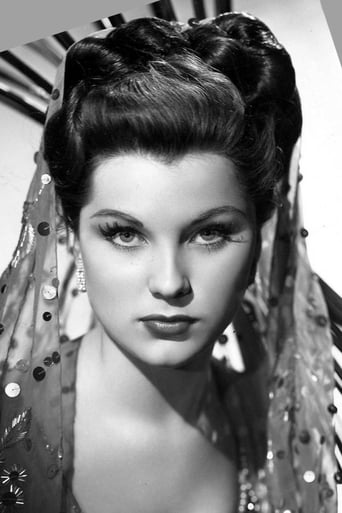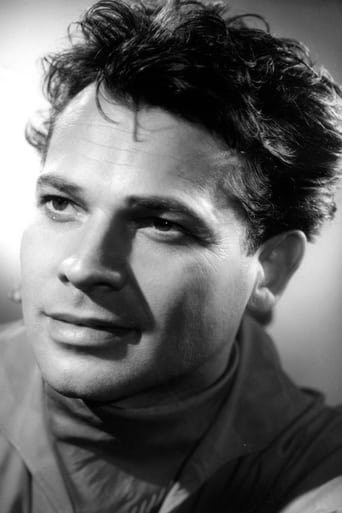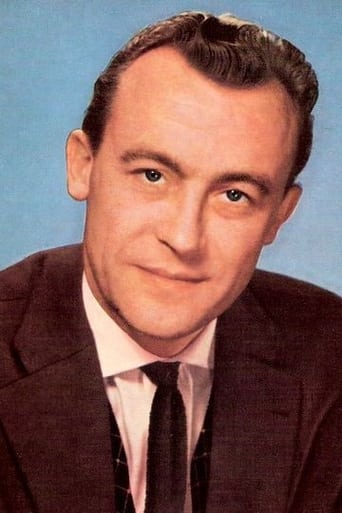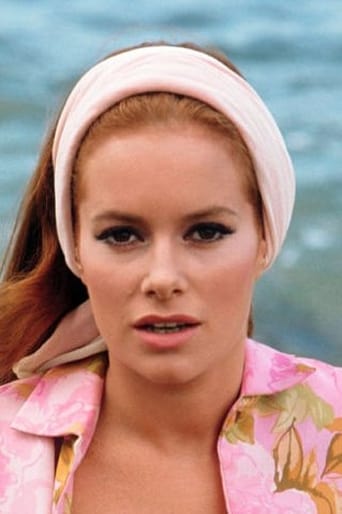talula1060
This movie was awful. Just as bad or worse than the first one. Same issues as the first one too. Acting was the worst thing about it. All the Indian characters were German with brown makeup to make them look Indian. It was extremely obvious in gorgeous Technicolor. The sole American leading lady was referred to as Indian but she had the features and coloring of Elizabeth Taylor. Apparently Lang thought having black hair and bare feet were the only things she needed to make her look Indian. The prince was terrible and often spoke forcefully for no reason. His makeup was very noticable and very phony looking. Jewelry was often too big for the actor wearing it and very phony looking also. The actors had very limited skills which often made them yell or glare at people regardless of what was taking place. Amateur mistakes.
The brother of Berger is awful and often inexplicably shouts his lines. At one point, his employer the prince, removes some architectural models from the room and the brother throws a tantrum, shouting and throwing things. The brother did not want to work on any designs anyway since his partner was missing so why he freaked out is unclear.
In another scene, he is instructed by the Prince to build a tomb. The prince angrily tells him all the precious gems he will have at his disposal. He's almost shouting the names of the gems as though the brother had protested the crappy materials. It makes no sense. The leading lady Seetha is only there for eye candy. Her skills are very limited. Perhaps because of this, Lang always puts her in tight fitting tops without benefit of a bra and then will have her stretch and lean in the supposed guise of prayer to this or that goddess. At one point she does a sensual dance with a snake in which she is basically naked with a few week placed bits of cloth. She does a dance with a snake where she flexes her bare legs and even thrusts her hips suggestively over and over. For the time period this is beyond risque. Her face is exquisite to look at and this and the above dance are what make her bearable on screen. Her acting is tough to gauge because she's an American who didn't speak German so all her lines are dubbed by someone else.
The writing isn't particularly good either. Characters do things that don't make sense and are never explained. Some of the plot devices are ridiculous and obvious. Like when the Prince steals a coat and smears it in blood to present to the hero's sister to prove he's been killed. This coat had been sewn recently by the hero's sister and had been stored in the closet of her room. Of course she knew it was a lie! Just lazy writing here. The prince is all upset because this woman he liked didn't like him? They barely knew each other and had no arrangement but he acts as though she'd cheated on him. It's far too weak a storyline to be believable as the prince isn't played like an ego maniac who expects everyone to bend to his will. He just wasn't the kind of guy to force a woman to be with him. In any case, i gave it 3 stars for the beautiful color, scenery and costumes. The acting, story, and directing warrant a big fat zero.
MartinHafer
This is the continuation of the story begun in "Der Tiger von Eschnapur". This previous film ended with the lovers seemingly on death's door--dying out in the desert after running away from the vengeful Maharaja. Now, shortly after, the pair are recaptured. The beautiful dancer (Debra Paget) is being forced to marry the nasty Maharaja and her lover (Paul Hubschmid) is being held in a dungeon--but she's been told he's dead. In the meantime, the nice engineer's sister and brother-in-law are virtual prisoners of the Maharaja's kindness and they soon realize the man knows more about Hubschmid than he's admitting. And, during all this, there are MANY folks conspiring to depose the Maharaja.The first film was escapist fun. This second one is dreary and slow during too much of the film. Part of it is that it's so talky. Part of it is the best part of the first film was the love story--but Paget and Hubschmid are separated almost this entire film and spend almost no time together. And, part of it is that the script is rather bereft of action--at least until the end of the film. And, when the fighting broke out, it often seemed like it was being performed in slow-motion. Finally, the Maharaja's change of heart at the end made no sense. Where did this come from considering it completely violated who he'd become in the film. The only really good thin about the film is Paget's sexy dancing--which manages to perhaps be even more alluring than it was in the first film! Wow. But otherwise, a rather limp follow-up--and one that should have been fun.By the way, I just about always watch films in their original language with subtitles. On a lark, I decided to leave the English language version on for a few minutes--just to see if they were different. Oddly, the leading man plays a Canadian in the English language version and he's a German in the original film! Perhaps with WWII only a decade and a half back, they thought the film would be more marketable outside Germany if the man was a Canadian. I noticed a few other differences and turned it back to the German language version.
kirksworks
(Spoilers). The Indian Tomb (actually titled The Tomb of Love in the opening credits of the Fantomas DVD release) is part two of Fritz Lang's Indian Epic, and I have to say that this and Part One, The Tiger of Eschnapur, are quickly become two of my favorites of this director, despite their deficiencies. As I said in my notes about Tiger, this two part production has a lot going for it, not the least of which are the remarkable locations, cinematography, Langian screen compositions and costumes. This is eye candy to the max with one amazing image after another, but its modern day Adam and Eve storyline and supernatural microcosm are also noteworthy. Part One set the stage, pitted the characters against one another, and in Part Two, the rivalry between architect Harald Berger and the Maharaja Chandra, and the political intrigue finally explode in full force. In Part Two the pacing also picks up. Speaking of that, I must mention that the first time I watched both films, I found them rather slow and uneventful, particularly Part Two - but something about them brought me back and about a year later I re-watched them. The second viewing was a very different experience. I saw things I completely missed the first time around. The clever irony, the emphasis on the spiritual world, the correlation of animals to the main characters and the Gods, the existence of a subversive underworld, and the interplay of opposing forces all came into focus in the most poetic fashion. On first viewing I think I preferred the first part, but I now feel they are equally strong. In Part Two, the plot to overthrow the prince and the arcs of the key characters (particularly Paget's Seetha character) carried more weight on second viewing. As someone else said, the films are structured in a cliff hanger serial style, not unlike the Indiana Jones films. Unlike Spielberg, however, Lang's Indian Epic isn't afraid to take its characters seriously. There is humor, but the romance of character, locale, theme and story take a front seat. There is more going on here than just a fantastic adventure. At the end of Part One, the hero, Berger, and the Indian dancer, Seetha, beaten by the sun in the desert, collapse, and Berger shoots his gun towards the sun in an act of defiance against God. This theme of defiance towards God develops throughout Part Two. And Part Two also has Debra Paget's erotic dance of death (with an unfortunately fake snake). As I mentioned in my comments about Tiger, Paget basically runs away with the whole show, and her erotic dance in this part certainly adds to it. With her many jeweled costumes contrasted by her dark makeup, she never radiated on screen more beautifully. She is truly one of the great faces of that era. Her scant gilded costume is very risqué for 1960, and I can't image it didn't get censored back then. Yet, the dance is beyond erotic, for it also intelligently expands the drama of the story. Lang's compositions speak volumes about the characters and an entire essay could be written about them. Suffice to say, even if the meaning of the shots don't hit you, you'll still be blown away by the exquisite colors, production design, and costumes. The use of white is astounding. And let me mention the music by Michel Michelet. It's quite a stylish score, rich with exotic instrumentation, Indian marches and fanciful dances. Like the exquisite images, the score adds considerably to the alluring atmosphere. If you're a Fritz Lang fan, and you don't mind silent film pacing, you're probably of an age and mind-set to appreciate this epic. It made me wonder what Lang would have done with Metropolis had he shot it in 3-strip Technicolor. There are some deficiencies I must mention, however. Some of the visual effects are less than satisfactory (the aforementioned snake being the worst offender), and a few of the sets look like sets. Also, some of the Indian characters (Chandra, for example) are not Indians but white actors in makeup. Such was the times, but even as recently as 1982's Gandi, white actors (Ben Kingsley) were playing non- whites. Nevertheless, the broad strokes performances work well in this kind of adventure. The Fantomas DVD of Lang's Indian Epic has both German and English language available. Even though the dubbing is regrettable, the English version is preferable (unless you speak German), since the subtitles avert your eyes from the spectacular imagery. If you approach this with an open mind, Lang's Indian Epic will sweep you away to a wondrous world.
MARIO GAUCI
I was wary of purchasing Fantoma's 2-Disc Set of "Fritz Lang's Indian Epic" after being somewhat let down by the 1921 Silent original (co-scripted by Lang himself) and also its less-than-stellar reputation. For this reason, when the second part of the saga turned up on Italian TV a couple of years ago, I decided to check it out just the same so as to get an inkling of what to expect! I recall thinking it pretty kitschy and unworthy of Lang's enormous talent, but Fantoma's sale (through their website) of their entire DVD catalog a few months back made it an irresistible acquisition! Well, having now watched the entire saga (with dialogue and in color, as opposed to the rather static Silent version directed by Joe May - although hearing the Indian-garbed characters talking in German took some getting used to), I was pleasantly surprised by how genuinely engaging and sheerly enjoyable it all was! Though it was sold as an epic production (to the point of concluding ESCHNAPUR with the promise that Part II would feature greater thrills and even more spectacle) at a time when such films were all the rage, the saga was actually a pretty modest undertaking by eclectic (and prolific) German producer Artur Brauner. Despite the two films' exotic, handsome look (not least in the provocative dances of Debra Paget), the budgetary constraints were painfully obvious in the special effects department, especially the hilarious appearance of a 'ropey' cobra which is intended to 'test' (the scantily-clad) Miss Paget's faithfulness to the Maharajah!! All in all, even if these films hardly constitute Lang's greatest work (though he harbored an evident affection throughout his life for this particular tale, which was originally conceived by his former wife Thea von Harbou), they have great - and enduring - appeal for aficionados of old-fashioned, serial-like adventure stories tinged with romance and mysticism.Even so, while I don't subscribe to that school of thought myself, there are some film critics (Tom Gunning, Jean Douchet and Pierre Rissient among them) who think very highly of Lang's Indian diptych - the first considering it one of Lang's towering achievements and the last two numbering it among the ten greatest films of all time!!




